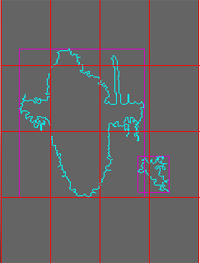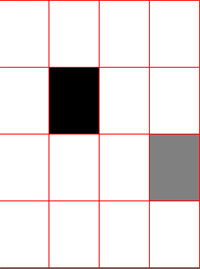Prototype 7: Colour tracking
One fundamental challenge is what Jannson (1983) calls the ‘masking problem’, that is, the way that the perception of an object or target can be hidden by other environmental features. In our second, successful ball tracking experiment, all but one of the failures were due to the subject not being able to initially position his head so that the thresholded camera image was predominantly white and no stimulation was sent to the vibrotactile array. If the subject did find the ‘still’ position before the ball was released, then they were able to track the ball without any problem. Because of the difficulty of ‘registering’ the camerausers remained focused on the interface and the technology never became transparent. We therefore used the openCV library, developed by Intel, to implement colour tracking of the ball and the user's hand.


